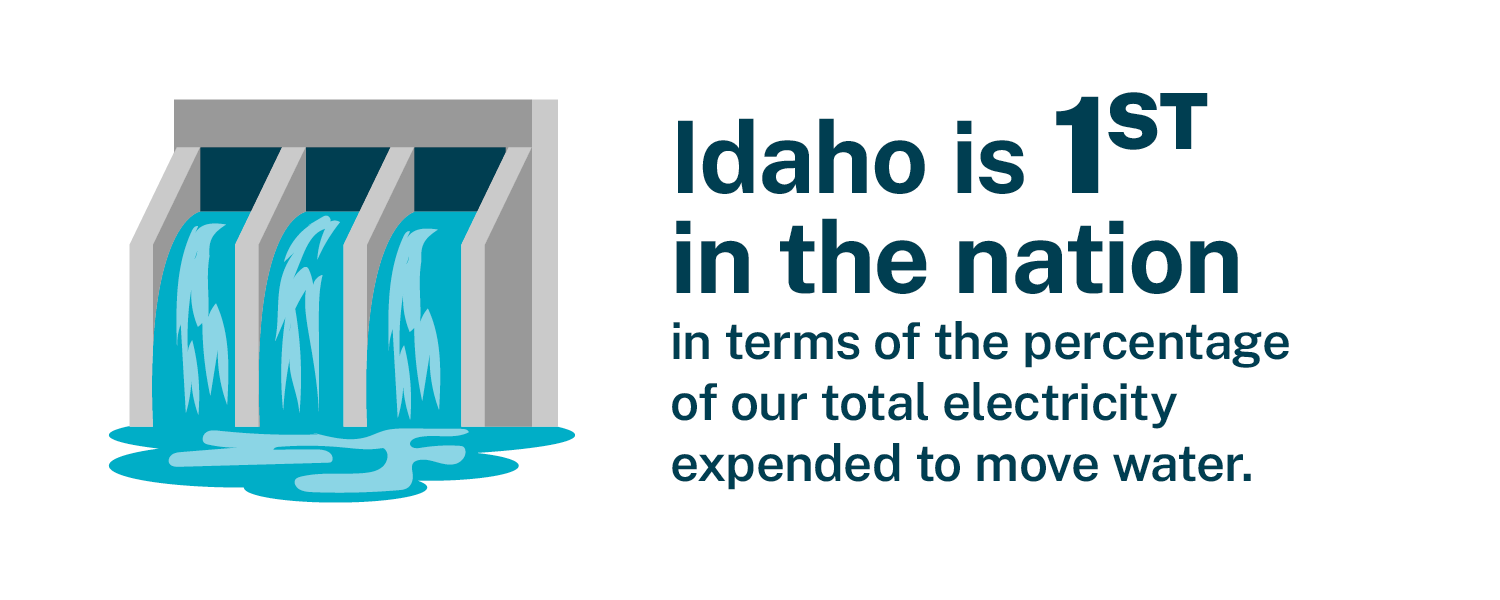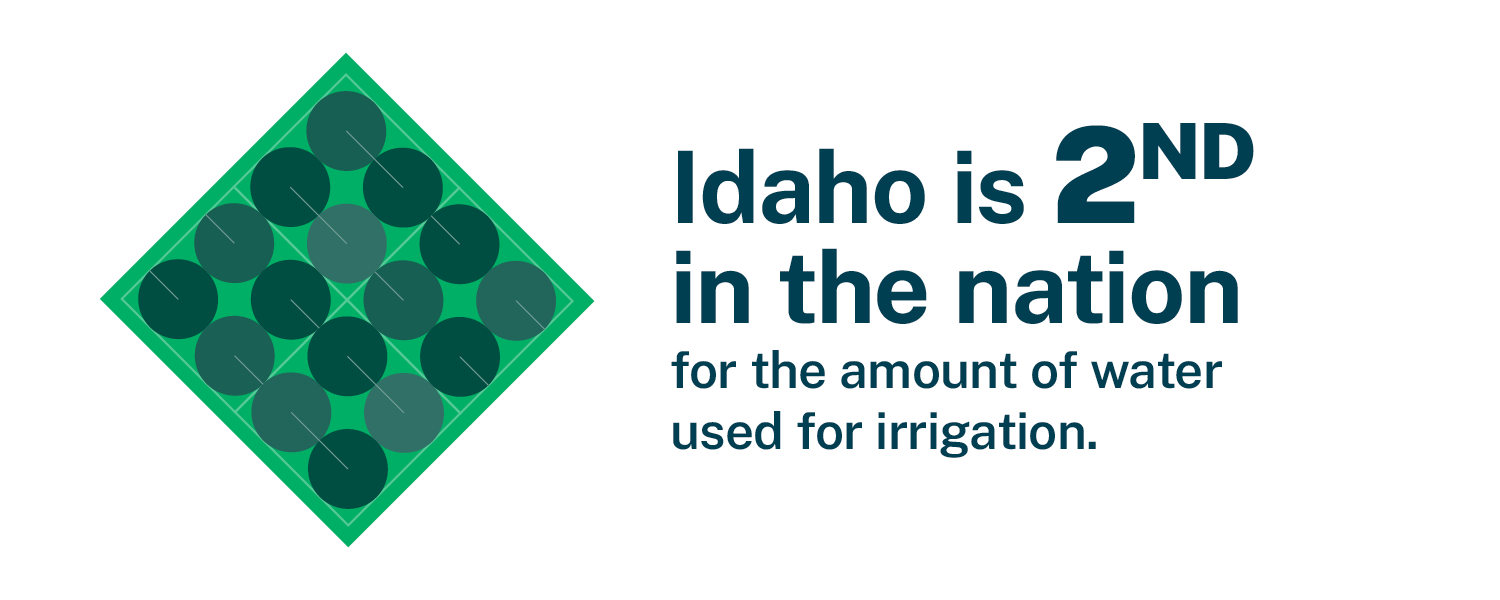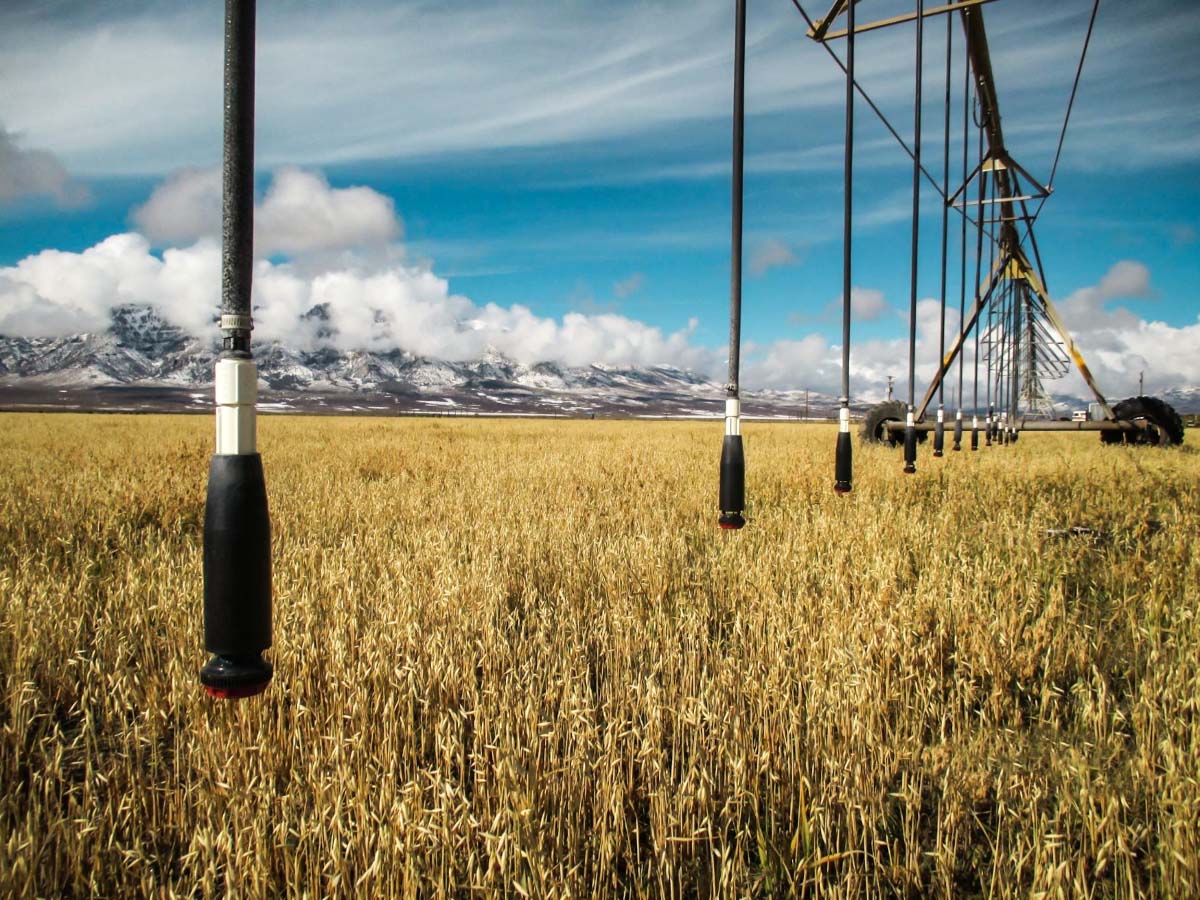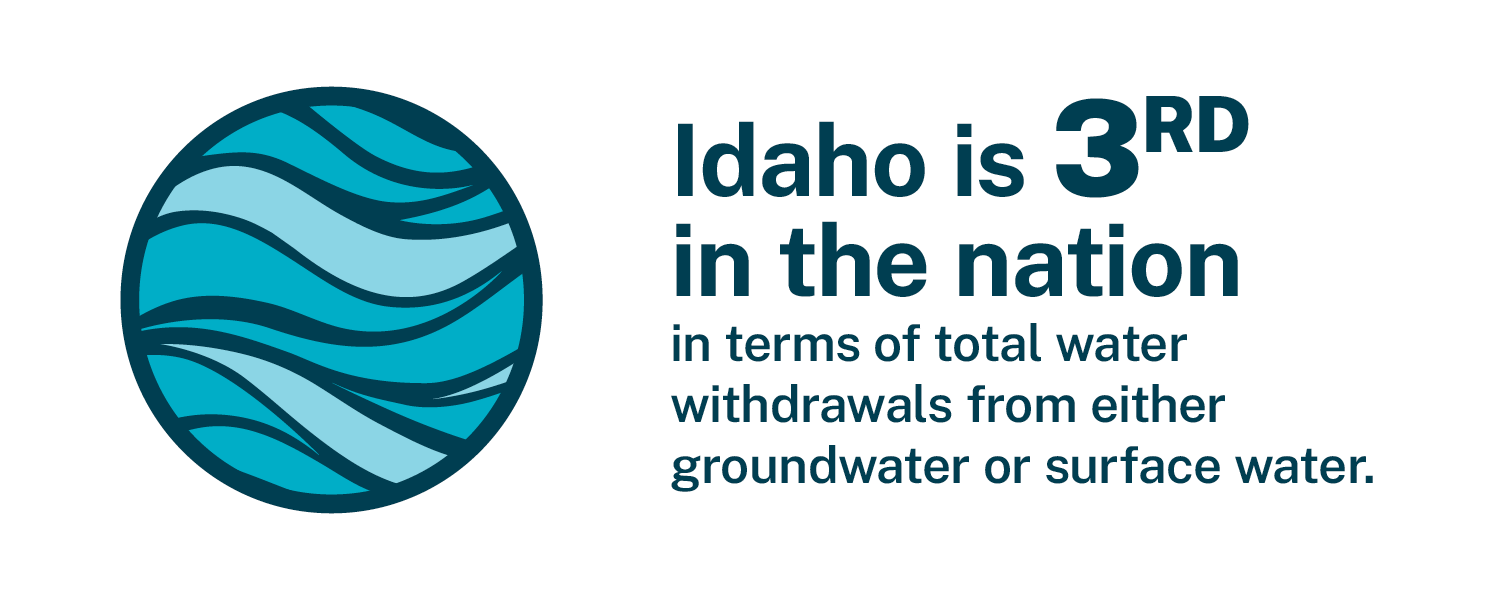A Delicate Balance
Researchers Model Vulnerable Energy and Water Nexus Found in Idaho Agriculture
Idaho is first in the nation in terms of the percentage of our total electricity expended to move water.
The irrigation of Idaho’s crops — where most of that energy goes — critically impacts the delicate balance between energy use and water availability in the state. After calculating the use of these resources across southern Idaho, Karen Humes, a professor in Earth and Spatial Sciences, wants to test what changes in farming and electricity generation could make the region more resilient.
“If you’re driving along and you see one of those large center-pivot irrigation systems, you should think about energy use,” Humes said. “It takes a lot of energy to pressurize the water to shoot it out to those very long arms.”
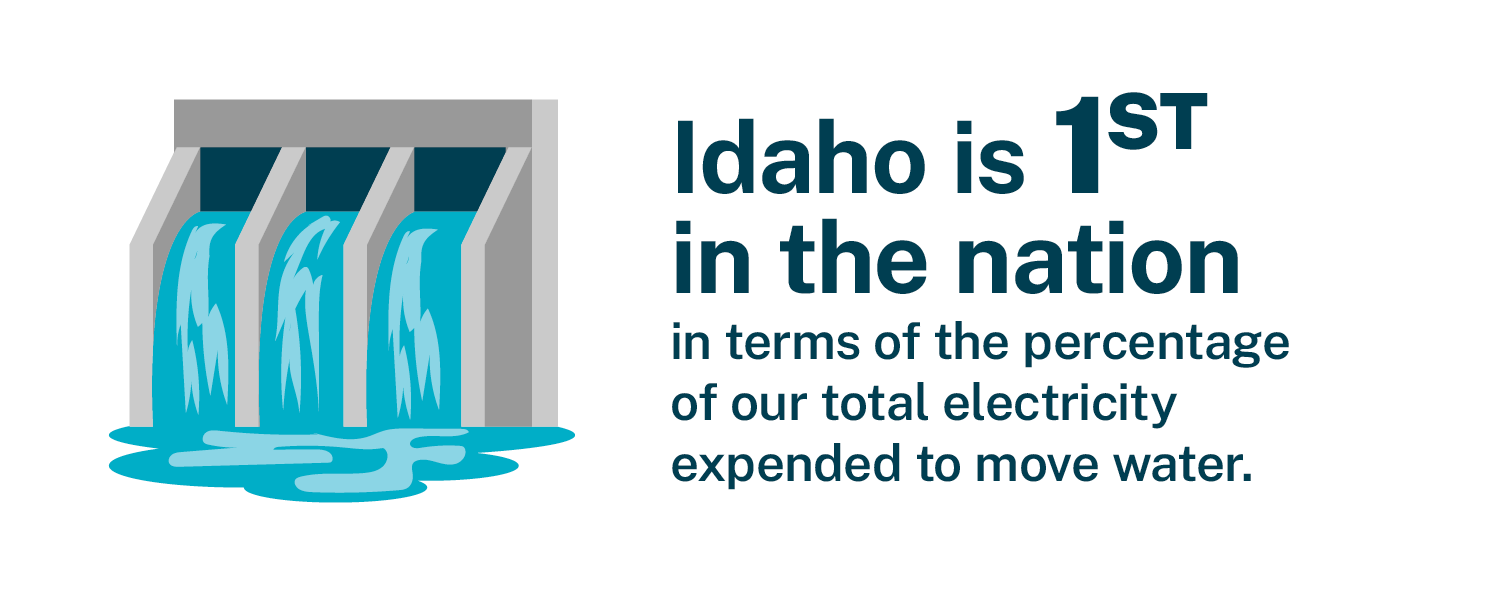
The Center of Balance
Idaho’s water and energy resources are inextricably linked: Water is needed to generate hydropower — Idaho’s primary source of energy — while irrigation requires energy to pump water onto fields.
“As long as we maintain this really tight connection between water and energy, we are vulnerable," Humes said. That’s why we wanted to study this interaction of food production, water and energy.”
Despite its less than 2 million population, Idaho is third in the nation in terms of total water withdrawals from either groundwater or surface water, behind only California and Texas. Roughly 86% of that water supports irrigation, putting Idaho second in the nation for the amount of water used for irrigation, behind only California, a fact that Humes said surprised even her.
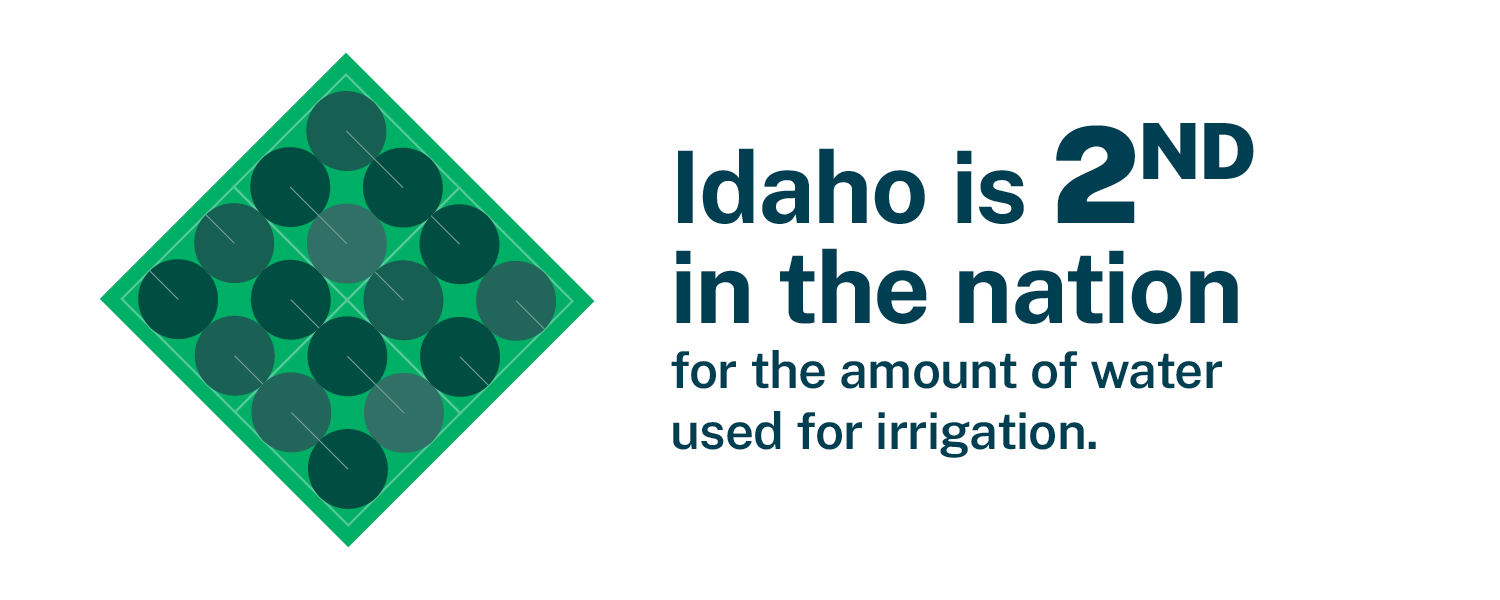
Drought then jostles the delicate balance of water and energy use.
It starts with the crops, which demand more water just when water availability is at its lowest. As the effects of climate change increase, researchers predict drought will become more frequent and more intense and that summer stream levels in the Northwest will decline over the next half-century.
“We see the evidence of this already,” Humes said. “There have been ‘water calls’ in southern Idaho where senior water rights users require junior water rights users to curtail their use in times of drought.”
“ As long as we maintain this really tight connection between water and energy, we are vulnerable.”
— Karen Humes, hydrologist
To complicate matters, hydropower competes with irrigation for water resources during droughts as the increase in irrigation demands more energy from hydropower production. Other forms of irrigation, like furrow — or flood — irrigation, may be less energy intensive than center-pivot irrigation but water loss is high as is sediment runoff.
It’s a compounding problem.
“In times of drought, the system we’ve designed puts the squeeze on us,” Humes said. “We need more water for crops, and we need more energy. But our biggest resource for generating energy, hydropower, needs to be curtailed under these drought conditions because there is less water in the system to use for hydroelectric production.”
Tweaking the System
To understand this balancing act, Humes and Emily Thompson, a doctoral candidate working with Humes, are quantifying how much water and energy Idaho uses for irrigation and how those values change depending on whether it is a dry or wet year.
They are building a computer model that compiles 20 years of data on water and energy use across southern Idaho. Preliminary data shows that power companies in southern Idaho experience a roughly 30% increase in power use during the agricultural season.
When the model is complete, researchers and water and energy planners can use it to estimate changes in water and energy use when a factor in the model is tweaked.
As an example of running tests, Humes is examining crop type, which influences water uptake. The alfalfa farmed to support the growing dairy industry is a notably water-heavy crop as multiple cuttings can be taken each summer. Researchers can test increasing and decreasing the proportion of alfalfa grown locally. She is also investigating how increasing electricity generation by renewable sources such as solar energy, which is plentiful in times of drought, would influence the system — without placing further demands on water availability.
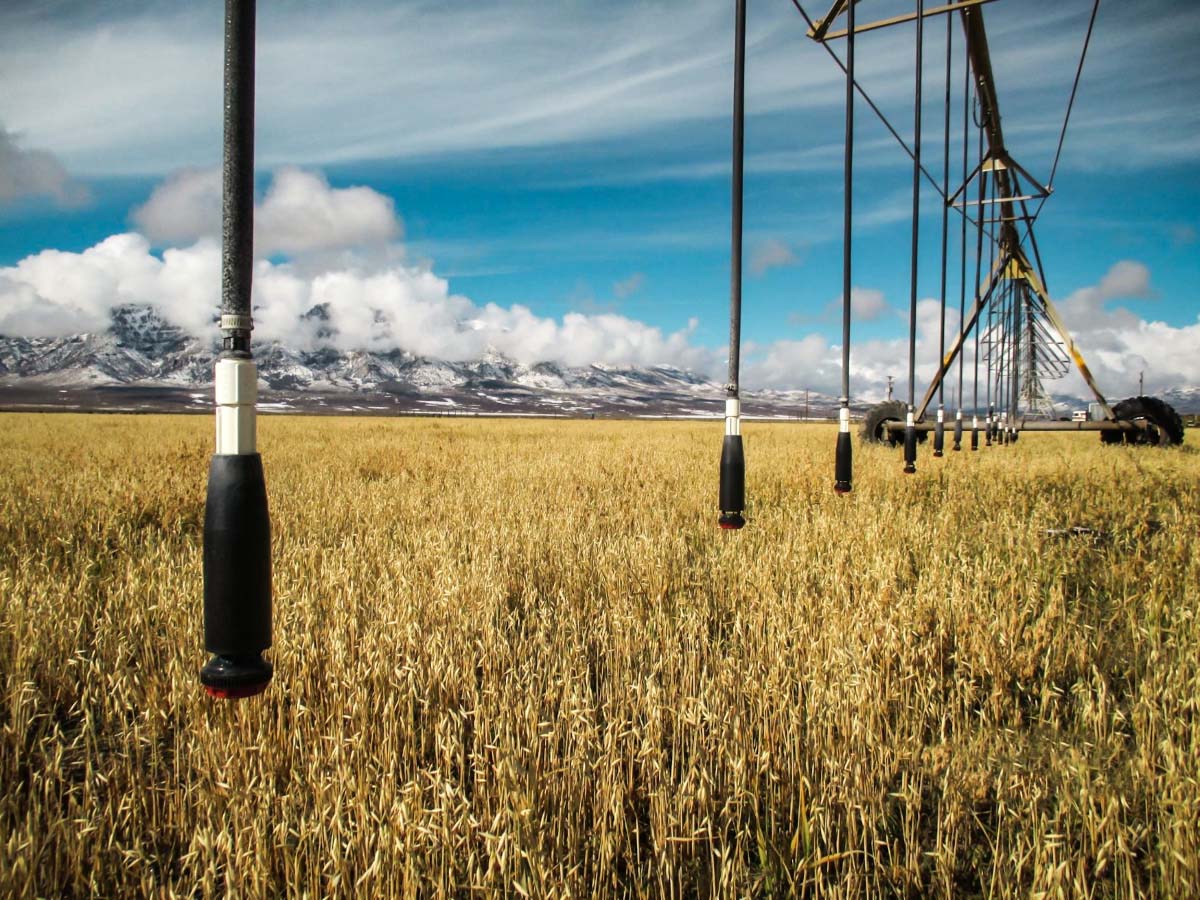
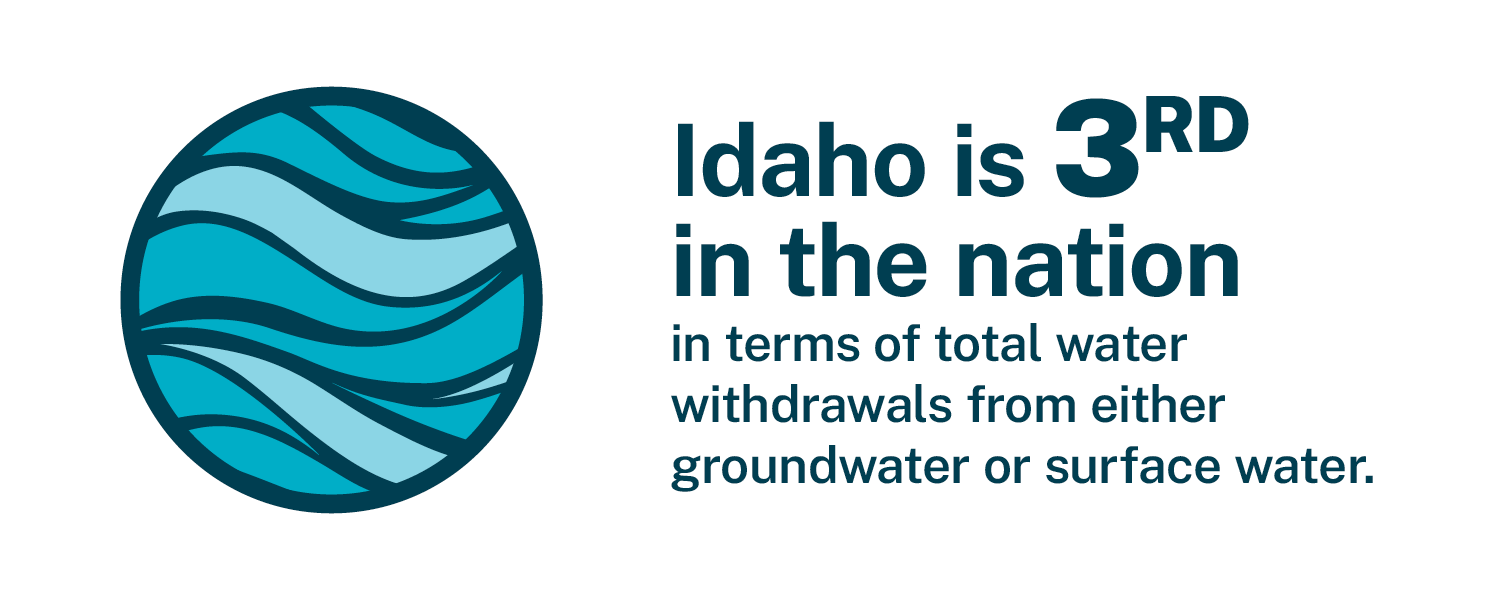
Down the road, Humes will work with Russell Qualls, associate professor in chemical and biological engineering and Idaho’s state climatologist, to estimate future water and energy use over the next half century.
“The uncertainty of future climate elevates the risk of increased drought severity and duration,” Qualls said. “Nevertheless, climate simulations can provide a range of possible outcomes. This model can generate optimal operational responses to possible drought conditions in advance, which might not be apparent if irrigation and power generation were considered separately.”
Thompson said the model can be used for risk assessment, indicating where Idaho is most vulnerable.
“The ultimate end goal would be able to take the completed model to people to say, ‘Hey, look, this is an issue,’” Thompson said. “We can figure out what kind of agricultural policies and energy generation infrastructure need to be put in place to help protect our natural systems and our economic systems.”
This project was funded by US Geological Survey under award G16AP00050. The total amount of federal funds for this project is $92,335, $15,000 of which went to this project.
Article by Leigh Cooper, University Communications.
Photos by Melissa Hartley, Garrett Britton and Rio Spierling, University Visual Production.
Published in July 2023.








